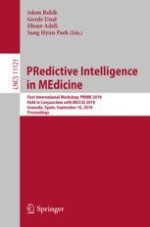2018 | OriginalPaper | Chapter
Prediction of Severity and Treatment Outcome for ASD from fMRI
Authors : Juntang Zhuang, Nicha C. Dvornek, Xiaoxiao Li, Pamela Ventola, James S. Duncan
Published in: PRedictive Intelligence in MEdicine
Publisher: Springer International Publishing
Activate our intelligent search to find suitable subject content or patents.
Select sections of text to find matching patents with Artificial Intelligence. powered by
Select sections of text to find additional relevant content using AI-assisted search. powered by
